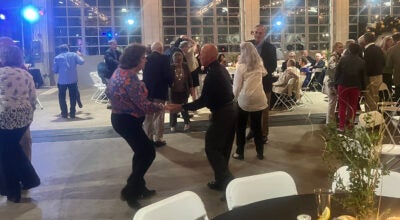Marsh column: Warming up and cooling down
Published 12:00 am Monday, April 2, 2012
Let’s start with the warm-up — the main purpose of a warm-up is to slowly raise your heart rate and begin with small movements to big movements of the joints. An example can be shoulder rolls, bent arm rolls and then finishing with extended arm “rolls” or march in place, march with your knees up high and then run in place. If you don’t warm up first, you put your heart, lungs and circulation into high gear at the beginning. You wouldn’t start revving your car when it is still cold — it could do damage to the engine. Well, the same counts for your heart. Stretching is used to prepare your body for the movement and the workout that is coming up. It can, in most cases, prevent injuries and soreness due to an inadequate warm-up and stretch.
Unfortunately, stretching is put on the “back burner” by many people who workout regularly. They don’t spend enough time to stretch before or after a workout, if at all. Many people I know have gotten injured by just being too tight.
Your cool-down is important because, as we did in the warm-up (slowly raising the heart rate), we now slowly lower the heart rate. After a hard cardio workout, your heart is pumping and your lungs are burning. If you stop immediately, you could have the chance of having “blood pooling” in the extremities. When you exercise, your heart is pumping your blood rapidly throughout your body. In your lungs, the exchange takes place to change the “used” blood (de-oxygenated blood) with “fresh” blood (with oxygen) that can go back to all the organs and tissues and muscles. If you stop abruptly, your heart has pumped so hard that a lot of your blood is in the extremities, making the blood volume near your heart (and lungs) low. This condition (blood pooling) can make you pass out. So, in other words — cool-down!
Stretching after your workout can help prevent muscle soreness, and after you are nice and warm from the workout, you can actually challenge your body to increase your flexibility. Again, proper flexibility prevents lots of injuries. If you have ever been in physical therapy, the majority of the time the therapist does exercises with you to lengthen and strengthen the area that has been injured or needs rehabilitation. Anyone who has had major knee surgery remembers that “torture device” which makes your leg go into flexion mode (bending). However, within time you can bend your knee further and are on your way to recovery. So, please take your time to properly warm up and cool down. Your body will thank you.
Ester Marsh, ACSM cpt




